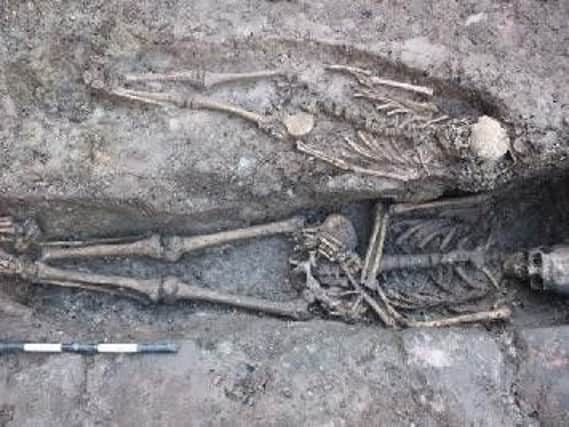Spines of ancient skeletons hold the key to past lives says Scottish researcher


Katie Larner, a PhD student at the University’s Centre for Anatomy and Human Identification (CAHID), will lead the next Café Science Dundee event at Medina Bar & Grill on Monday 27 January.Each year, around 1 in 3 people in the UK suffer from back pain. It is one of the most common causes of disability and has links to a variety of spine disorders.
These diseases occur for multiple reasons, such as age, physical activity and genetics, and can be found in the skeletons discovered by archaeologists.
Advertisement
Hide AdAdvertisement
Hide AdKatie’s talk, ‘Back Pain through the Ages’, will see her explain how research into the history of spinal health may help our understanding of spinal diseases that affect so many of us.
She will discuss what diseases archaeologists might look for in the spine and how they identify them.
READ MORE: https://www.scotsman.com/lifestyle-2-15039/secrets-of-early-aberdonians-to-be-revealed-by-city-skeletons-1-4830012Looking at signs of disease on skeletal vertebrae allows researchers to build a picture of a person’s life.
By looking at multiple skeletons from the same burial site researchers can see how individuals fit in with broader patterns within a population. Results of research into different populations can then be compared to build a more global picture of the prevalence of spinal diseases.
“Spines can tell us some interesting things about a person, such as whether they potentially did a lot of physical labour,” said Katie. “We can’t say whether an individual did a specific activity from their skeleton, but if many skeletons from a similar period display the same kind of characteristics then you can start to see patterns that may provide a clue as to how our ancestors divided their labour and what kind of stress they were under as a population.
“I am interested in palaeopathological conditions of the vertebrae, how we look at them in human remains and what our backs tell us about the lives our ancestors led. The talk itself will introduce people to some of the research in which archaeologists have used the presence of spinal diseases to make inferences about different populations.
“There is definitely a limit to what we can tell about a population just from looking at skeletons. My research is about evaluating the methods currently used to identify and record diseases of the spine. The idea is to look at what methods are used and to see if people are implementing methods in the same way.
“By doing this we can make informed interpretations from existing data and in the future develop a more standardised approach to research. This will allow us to further understand spinal diseases in the past, the ways they manifest and how they can inform us about the lives people lived.”
Advertisement
Hide AdAdvertisement
Hide AdREAD MORE: https://www.scotsman.com/news-2-15012/having-a-spine-similar-to-a-chimp-could-lead-to-back-pain-1-3757448‘Back Pain through the Ages’ takes place at Medina Bar & Grill, 113 Nethergate on Monday 27 January from 7pm. This is a free event and everyone is welcome. There is no need to book in advance but arrive early to avoid disappointment.